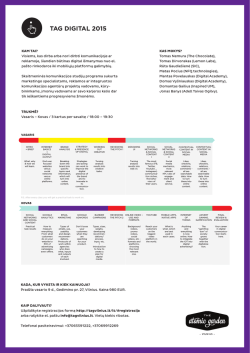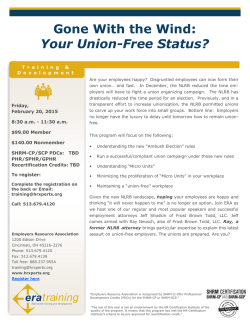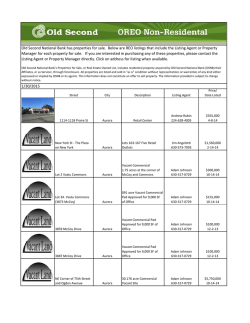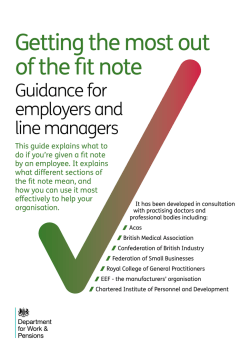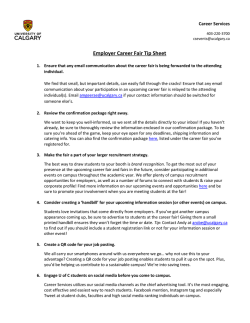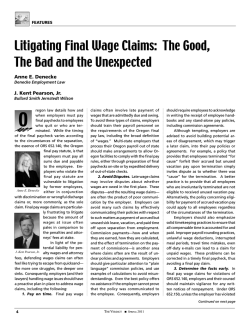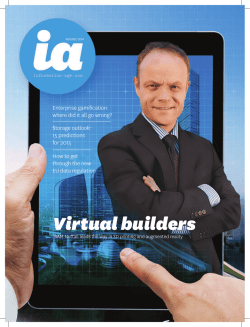
White Paper
FOUR WAYS TECHNOLOGY IS CHANGING EMPLOYEE BENEFITS ©2015. All Rights Reserved | www.ADAM.com | 1 800 755 ADAM Table of Contents INTRODUCTION . . . . . . . . . . . . . . . . . . . . . . . . . . . . . . . . . 3 ONLINE PORTALS. . . . . . . . . . . . . . . . . . . . . . . . . . . . . . . . 3 GAMIFICATION . . . . . . . . . . . . . . . . . . . . . . . . . . . . . . . . . 4 ‘VIRTUAL’ HEALTH CARE . . . . . . . . . . . . . . . . . . . . . . . . . . 5 BIG DATA . . . . . . . . . . . . . . . . . . . . . . . . . . . . . . . . . . . . . . 6 CONCLUSION . . . . . . . . . . . . . . . . . . . . . . . . . . . . . . . . . . 7 ©2015. All Rights Reserved | www.ADAM.com | 1 800 755 ADAM Introduction Technological advances are changing workplaces in a variety of ways — including in the way employers provide benefits and educate their employees about the options available to them. Employers increasingly are harnessing the power of technology to make the process of employee benefits education and delivery more efficient and effective. Technology also has empowered employees to take charge of many of their own benefits decisions. This white paper will examine four significant ways technology is changing employee benefits for the U.S. workforce. Online Portals Providing a benefits resource library with a variety of information about employee benefits — including bulletins, updates, newsletters and FAQs — keeps employees informed about their benefits options and provides a one-stop shop for forms, policies and other important information they need to make good decisions and get the most out of their benefits. An online portal is a great place to keep all this information and make it easily accessible to employees at work and at home. A recent employee benefits technology study by Employee Benefits News finds much of companies’ benefits technology spending is directed at building employee portals. And making these portals interactive and engaging is key to getting employees to use them, says Chris Costello, principal and founder of CBG Benefits. “An employee benefits portal needs to be more than just a static website that holds PDFs associated to insurance plans,” he says. “It should also include interactive features that help employees better understand their plan options.” For example, it should include side-by-side comparison tools that allow employees to easily review their coverage choices. “Employers should also post a variety of content at different times throughout the year,” Costello says. “These may be quick tips or articles regarding health and fitness, financial wellness, stress management and underutilized ©2015. All Rights Reserved | www.ADAM.com | 1 800 755 ADAM 3 features of the benefits plans in place.” Including information about new hires or existing employees, such as photos and Q&As, can help keep the portal engaging. In fact, some employers’ portals provide more in-depth and interactive health and wellness resources such as patient education, health risk assessments, medical reference library, multimedia visual learning assets and online healthcare advice. Gamification Gamification apps are becoming an important part of wellness programs as companies look to control health care costs. “Gamification is a powerful tool for benefits leaders to alter behavior across an organization,” says Adena DeMonte, vice president of marketing at health and engagement platform Keas Health. “We are seeing more and more benefits leaders turn to gamification to optimize everything from increasing health risk assessments (HRA) and biometric screening completion to health coaching to benefits utilization.” DeMonte says there are two types of gamification. One involves offering gamelike experiences to achieve nongame objectives. “For example, offering short quizzes to employees on wellness, or any other topic, is a gamified experience,” DeMonte says. “Because these are fun and quick, they’re more effective for communicating important information than long articles or videos.” The other type of gamification involves the use of game psychology to drive behavior, DeMonte says. “Leaderboards, points, badges, progress bars, team competition and leveling are just a few of the game mechanics that can be used for virtually any experience and goal.” Gamification programs work best when they help people achieve goals, so well-being and health programs are some of the most useful places to employ them. According to a 2013 study by Buck Consultants, 62 percent of employers use some kind of technological gamification to promote health engagement. “These techniques are extremely effective in improving employee wellness and disease management,” DeMonte says. “Intrinsic motivation — that is, psychological motivators that make us want to do something that don’t require a tangible reward — are some of the best ways to change healthrelated behavior.” ©2015. All Rights Reserved | www.ADAM.com | 1 800 755 ADAM 4 Gamification can help employees both with achieving health goals and with benefits usage in general, DeMonte says. Gamification principles can help employees commit to small changes in their lives on a daily basis, which can help them hit their health goals in the long run. “For benefits awareness and usage, gamification can offer a sense of progress and clear direction in relevant programs for each employee, optimizing the right kind of utilization. We have seen significant reduction in health risk factors along with organization-wide increases in health benefit usage across all of our employer clients and two million members.” ‘Virtual’ Health Care The Affordable Care Act (ACA) has prompted changes in the U.S. health insurance system that has both employers and employees focused on costs. Encouraging employees to take control of some of their health care decisions keeps them involved in the process, and “virtual” health care initiatives can help employers and employees control costs by providing answers to noncritical questions quickly and remotely, via online portals, apps or other remote technologies. Cost containment is one of the big factors pushing technological initiatives in health benefits, says Soula Chronopoulos, vice president and group head of the A.D.A.M. division at Ebix, which oversees Ask A Doctor, the company’s telemedicine initiative. In addition, employee productivity has helped pique interest in high-tech solutions for getting answers to medical questions. “When we look at our staff, it’s clear how many days we save in productivity when we have a medical question and ask it online and not have to lose time taking off work,” Chronopoulos explains. “If you look at why patients go to see ©2015. All Rights Reserved | www.ADAM.com | 1 800 755 ADAM 5 doctors, it’s because they’re not sure if they have something that’s problematic. With Ask A Doctor, they can take a picture of what’s bothering them, send it and get an answer within the hour.” Technology has been making advances in health care for some time, Chronopoulos says, but it’s only recently that it’s been helping patients manage their own health. “The emergence of the electronic medical record (EMR) has made it easy to track and bill, but it doesn’t really help the patient. EMR isn’t telemedicine, it’s just tracking.” But now telemedicine is moving from tracking patients through the system to focusing on innovations such as online care plans, where a specialist can view a patient’s personal health record and suggest things to improve that patient’s lifestyle or treatment from anywhere with Internet access. Another option is a curbside consultation, where someone with an injury may need to see a specialist, but instead of waiting for months, they can get an appointment at a nearby doctor and get an answer the same day. “It takes the burden off the health care system,” Chronopoulos says. “Employers who provide a service similar to Ask A Doctor can give employees a chance to take care of their own health issues. People leave work when they’re worried about family members who aren’t feeling well and might need medication,” Chronopoulos says. “They’re looking for answers about their children, especially if they’re a new parent.” “An employee who needs to leave for an earache and have it examined at a clinic may be gone for three hours,” Chronopoulos says. “But by using a service like Ask A Doctor, the employee can log in from work and ask about the problem online. While the doctor still might have the employee come in for an exam, it can cut down on ‘what if’ appointments that aren’t necessary. The ROI is much higher when you factor in something like lost work days.” “Employees see a lot of value in personalized medical advice,” Chronopoulos says, and “it can help minimize the unnecessary use of over-the-counter medicines and other services. Having access to medical information and advice no matter where people are can also provide peace of mind when traveling or relocating.” Big Data Using analytics to break down big data and extract employee benefits information can help employers identify disease trends and utilization patterns so they can build more efficient and effective benefits packages. Harnessing the power of big data can help organizations better understand how benefits packages are being used and what new options may be valuable to employees. ©2015. All Rights Reserved | www.ADAM.com | 1 800 755 ADAM 6 In addition, big data analytics can in some cases be used to make predictions about possible employee behavior. “Data-savvy organizations can create probability models and forecast the likelihood of certain events taking place,” says Tim Glowa, co-founder and partner at Bug Insights. Predictive analytics can help indicate whether a candidate may sign up for a certain benefits package upon hiring, for example, or whether employees with certain packages are likely to stick with the company for the next six or 12 months. “This allows for very prescriptive interventions,” Glowa says. “Once someone has been identified as a risk, the company can make the decision to intervene or not.” Conclusion Employers who want to keep their employee benefits packages effective, competitive and cost-efficient are increasingly turning to technological solutions. With the help of vendors, they can mix and match these solutions to meet their organizations’ unique employee benefits needs. ©2015. All Rights Reserved | www.ADAM.com | 1 800 755 ADAM 7
© Copyright 2025
